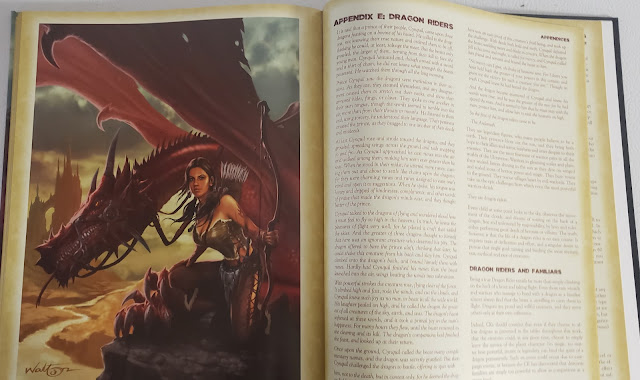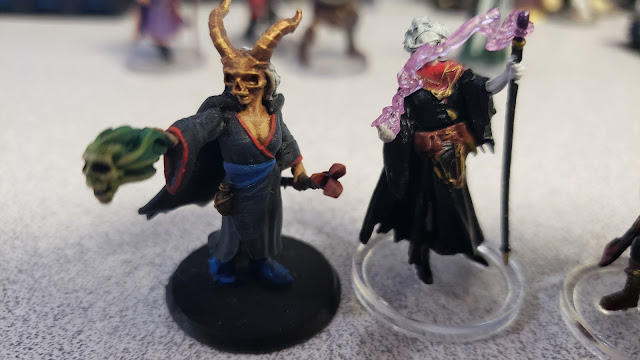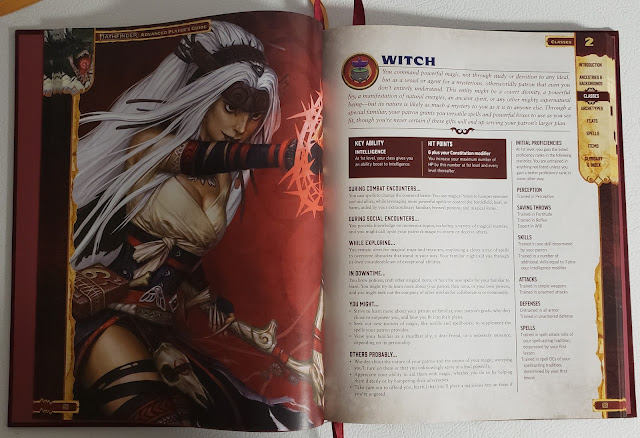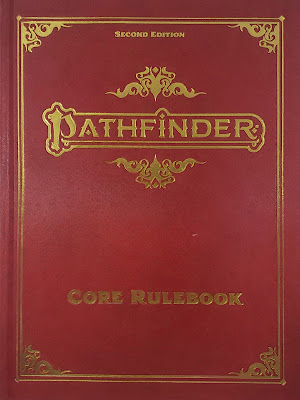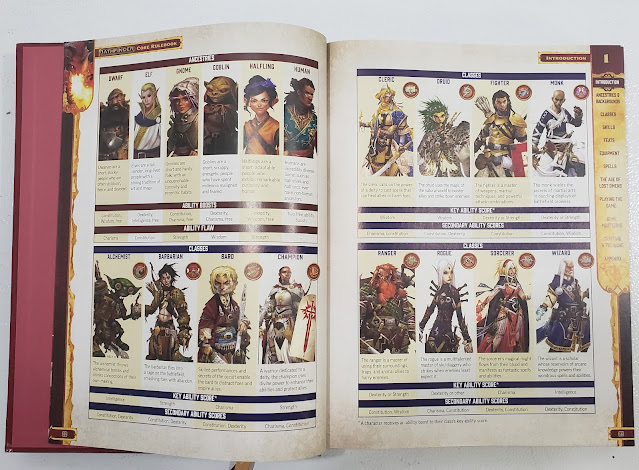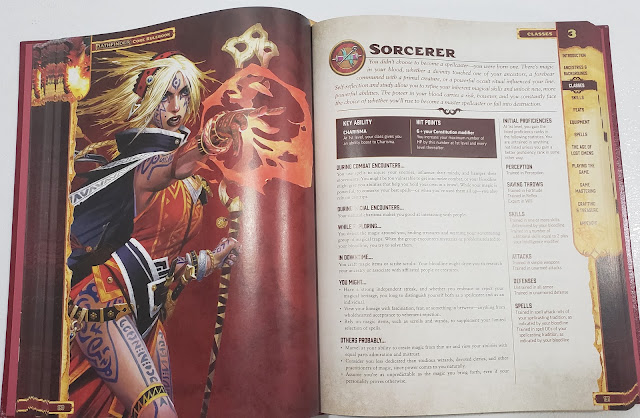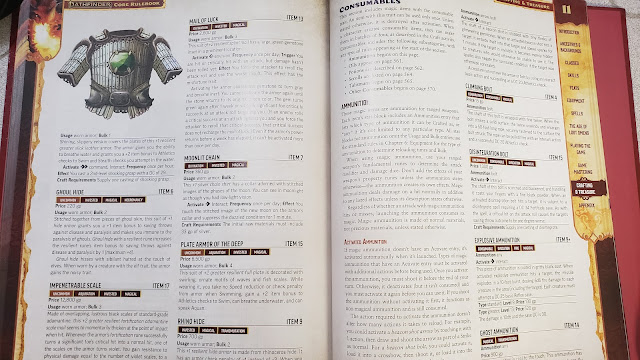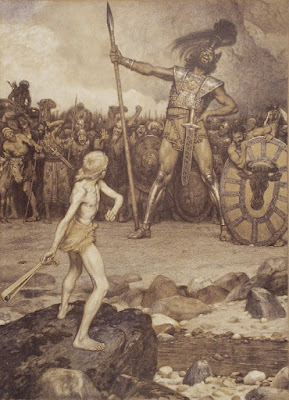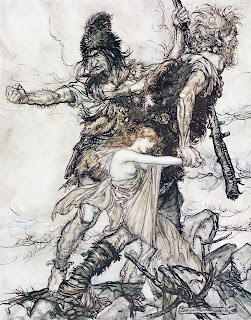All month long I have been talking about D&D and mostly near-D&D FRPGs. While last week was all Pathfinder, the one-time heir-apparent to D&D, this week I want to talk about a game that really does capture that feel of early, 1st Ed AD&D, with a more modern point of view.
Of course, that game is Castles & Crusades.
I have never hidden my love of Castles & Crusades and I would play a lot more of it if I could. It really does capture the feel of older D&D, maybe something of a Basic-era mixed with Advanced, through the lens of 3rd Edition. One really could consider it the evolution of AD&D2 into the new millennia.
This week I want to do more with Castles & Crusades, but I am going to do it from the point of view of some of my regular blog features. Today is Monday and that means Monstrous Mondays. So I am going to review and discuss the Castles & Crusades Mystical Companions book.
I can't believe that it has been three years (almost to the day) since I reviewed the 5th Edition version of this book. I had meant to do much sooner than this.
The Troll Lord's Mystical Companions is the update to their fantastic Book of Familiars. It comes in two flavors, A Castles & Crusades version, and a D&D 5th Edition version. I have both in digital and PDF formats, today I am going to focus solely on the Castles & Crusades version. Yes, they are in fact different enough that two separate reviews are really needed.
I was always going to use this book in my Magic School games, whether that game used an Old-School ruleset (like Castles & Crusades or OSE) or (now) D&D 5th Edition. I think that highly of it. Now it is something I am using as part of my War of the Witch Queens campaign where every character has an animal companion, pet, or familiar. My oldest kid has taken my 5th edition version and made it his own.
Mystical Companions for Castles & Crusades
For this review, I am considering both the PDF version from DriveThruRPG and the hardcover version I purchased from Troll Lord Games.
Hardcover book and PDF. 192 pages, full-color art by Jason Walton and Peter Bradley. PDF is bookmarked. This book is divided up into 12 chapters and 5 appendcies. Largely focusing on the various Castles & Crusades classes and their respective animal companions.
Chapter 1: Familiars and Companions
This gives us our basic overview of the book and the concepts of an animal companion in the Castles & Crusades game. Pro-tip. Even a casual read of the chapter titles should clue you in that if you wanted to use this with AD&D 1st ed you very easily could. There is also the notion that Animal Companions and Familiars, while similar and can perform similar roles and tasks are very different from each other.
On Animal Companion vs. Familiar. While rules in the book cover book and treat them somewhat interchangeably an Animal Companion is more like a loyal pet or friend. A Familiar is a creature summoned to work with the PC. Animal Companions are free-willed, familiars are not.
For ease, I am going to use"animal companion" for all cases unless a distinction needs to be made.
There is the concept here of Advantages, this allows the character to summon an animal companion. In truth, I think this works better in 5e than it does here, but I will explore this a bit more. Additionally, there are various Powers and Tricks animal companions can have or impart to their player characters.
Animal companions are all treated as other creatures from the beginning. They have HD, hp, AC and more scores.
Advantages are a new mechanic for C&C to allow them to take on various "powers" or "features." It was introduced in the Castle Keepers Guide as an optional rule, here it is required. It is, very simply put, a "Feat" system for C&C. That does not really describe it well enough, but it is close.
Different classes get new Advantages at different levels. Various abilities and powers of the animal companions are detailed here. Including what sort of special powers you can get by taking another animal companion/familar at higher levels.
If you are playing AD&D 1st Ed and really want to do familiars correctly then I highly recommend this book.
The following chapters each deal with the various C&C classes (and their AD&D counterparts in my readings) and their respective animal companions.
Chapter 2: Barbarian Familiars & Special Mounts
I don't recall Conan having a pet, but Cú Chulainn is known to have had some pet dogs. Since Barbarians feel closer to nature they have totem animals; an animal or creatures revered by their culture. This chapter covered these, and all the expected animals are here, but there are also totems for mammoths, displacer beasts, dire creatures of all sorts, and even small dragons.
Chapter 3: The Bard’s Familiar
Bards typically have familiars that aid in their singing or musical magics. Providing a number of powers to aid their abilities.
Chapter 4: The Cleric’s Familiar
These are not so much as animals and more attendant spirits. The least of the messengers of the cleric's god(s). Often they are here to provide the cleric guidance or omens. These creatures can, and often do, take on animal shapes. What that shape is depends largely on the cleric's domain.
Chapter 5:The Druid’s Familiar
Similar to both the Barbarian's and the Cleric's familiar. Here the deciding factor is the terrain/environment the druid is native to. There is a large sidebar/section on Druid Familiars vs Druid Animal Companions.
Chapter 6: The Fighter’s Familiar
This one seems a bit odd, but they do make a case for it. A good historical example might be the Mongolian fighters and their horses, or the hunting dogs of Celtic cultures.
Chapter 7: Monk Familiars
Again not one you normally think about. These seem to follow the same logic of the barbarian, but in stead of totem spirits they are manifestations of ancestor spirits. Think Mu-Shu from the animated Mulan.
Chapter 8: Paladin Special Mounts & Familiars
Paladins already get mounts. This extends that logic a bit more.
Chapter 9: The Ranger’s Familiar
Honestly, all Rangers should have an animal companion of some sort. This codifies it.
Every ranger needs a red panda familiar.
Chapter 10: The Rogue’s Familiar
Like the fighter, one does not normally associate Rogues/Thieves with animals, but honestly, it would be good. Think of Laurence Fishburne's character "The Bowery King" and his pigeons or D&D's own history of associating thieves with cats (the Grey Mouser from Lankhmar or Gord the Rogue).
Chapter 11: The Illusionist’s Familiar and Chapter 12: The Wizard’s Familiar
Putting these two together since they follow similar ideas. This is as close as we can get to the classic idea of a familiar. The natures of their familiars are different, which is great, it provides more distance between these two classes.
Appendix A: Animals
"Monster stats" for various (51) mundane animals.
Appendix B: New Monsters
Likewise, these are new monsters (36). Many are either familiars or creatures that feed on familiars.
Appendix C: New Spells
A bunch of new familiar summoning and related spells for all spell casting classes.
Appendix D: New Magic Items and Artifacts
Magic items to summon, control, or aid familiars and animal companions.
Appendix E: Dragon Riders
This last section covers a new class/path, the Dragon Riders, and how these rules are used for that class. While many of the same rules are used here as for familiars this takes them to a new place and should be considered optional.
This is the Appendix/Chapter that my son grabbed this book from me for, BUT he opted not use their Dragon Riders but kept the book anyway for everything else.
A Dragon Rider is a Path that can be added to any class, but some have more use for it than others. If the idea of PC Dragon Riders concerns you, then keep in mind it is being sold as "optional". And also Dragon Riders of some form or another have been around since the dawn of the game. If it is something you want, then there is plenty here for you to use.
If I ever ran a Magic School game with this then Dragon Riders would be included.
Index
We end with a robust index and the OGL section.
Final Thoughts
A note about art. There is not as much in this book as other Troll Lord books, but what is here is from the fabulous Peter Bradley and Jason Walton, who also gives us the cover art.
Your results may vary, but this book has quickly gone from a neat oddity to one of our must-have books for my Old-school games. My son uses it in the 5e games he has run so much that I have not seen my 5e version of this book in months since it is now in with all of his books.
Do you need this book? I say yes, but only if you are adding animals of any sort to your game, be they pets, familiars, mounts, companions, or all the way up to Dragon Riders.
Use in Advanced Dungeons & Dragons
I am going to limit my thoughts here to AD&D 1st Ed. The only reason I am not considering 2nd Ed is that 2nd Edition has a skill system that should be incorporated with these rules a little more explicitly. For 1st Ed, I can see a craft DM using this book more or less as-is.
I know Troll Lords does not sell this book as an AD&D book. But anyone who is a fan of C&C is likely a fan of AD&D. (Although I should point out I talked to a couple of real hardcore C&C fans at Gary Con who had never played AD&D First Edition.) But in any case, this is a fantastic reference for the 1st edition all the same.




